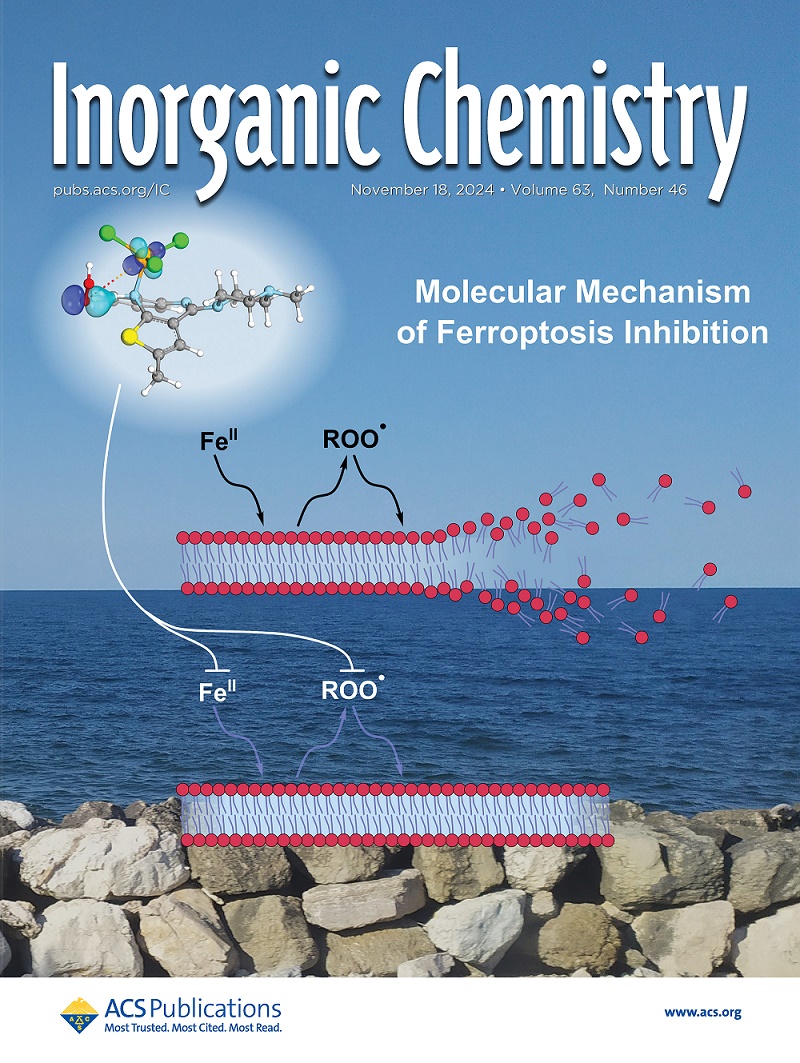Metal-Induced Amide Deprotonation and Binding Typical for Cu(II), Not Possible for Zn(II) and Fe(II)
IF 4.7
2区 化学
Q1 CHEMISTRY, INORGANIC & NUCLEAR
引用次数: 0
Abstract
Amide groups of the peptide backbone are very weak acids. In fact, their deprotonation in water solution is not a phenomenon usually observed in the measuring range of a glass electrode unless the proton is displaced by a metal such as Cu(II) or Ni(II). Other metals are not usually expected to deprotonate and bind to amide nitrogens, although, lately, some controversies have started to arise in the literature, suggesting that Zn(II) and Fe(II) may be capable of doing so. In order to clarify this phenomenon, we chose to study simple metal–peptide systems with Ala-to-Pro mutations, which excluded further amides from binding. A comparison of the metal-binding modes of Ac-AAAHAAA-NH2, Ac-AAPHAAA-NH2, and Ac-AAPHPAA-NH2 complexes with Cu(II), Zn(II), and Fe(II) is a simple and elegant way of showing that neither Zn(II) nor Fe(II) is able to deprotonate and bind to amide nitrogens.

金属诱导的酰胺去质子化和结合对 Cu(II) 典型,对 Zn(II) 和 Fe(II) 不可能
肽骨架上的酰胺基团是非常弱的酸。事实上,它们在水溶液中的去质子化现象通常不会在玻璃电极的测量范围内观察到,除非质子被 Cu(II) 或 Ni(II) 等金属取代。其他金属通常不会去质子化并与酰胺硝基结合,不过最近文献中开始出现一些争议,认为 Zn(II) 和 Fe(II) 可能会这样做。为了弄清这一现象,我们选择研究发生了从 Ala 到 Pro 突变的简单金属肽系统,这种突变排除了进一步的酰胺结合。通过比较 Ac-AAAHAAA-NH2、Ac-AAPHAAA-NH2 和 Ac-AAPHPAA-NH2 复合物与 Cu(II)、Zn(II) 和 Fe(II) 的金属结合模式,可以简单明了地说明 Zn(II) 和 Fe(II) 都不能去质子化并与酰胺硝基结合。
本文章由计算机程序翻译,如有差异,请以英文原文为准。
求助全文
约1分钟内获得全文
求助全文
来源期刊

Inorganic Chemistry
化学-无机化学与核化学
CiteScore
7.60
自引率
13.00%
发文量
1960
审稿时长
1.9 months
期刊介绍:
Inorganic Chemistry publishes fundamental studies in all phases of inorganic chemistry. Coverage includes experimental and theoretical reports on quantitative studies of structure and thermodynamics, kinetics, mechanisms of inorganic reactions, bioinorganic chemistry, and relevant aspects of organometallic chemistry, solid-state phenomena, and chemical bonding theory. Emphasis is placed on the synthesis, structure, thermodynamics, reactivity, spectroscopy, and bonding properties of significant new and known compounds.
 求助内容:
求助内容: 应助结果提醒方式:
应助结果提醒方式:


